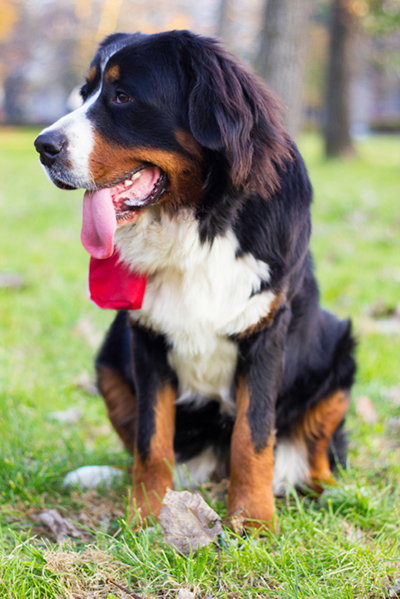Exercising your dog

Learning how to exercise our dog is a key part of the training process.
The amount of exercise your dog needs will often depend on his breed, age, health and size.
Some guidelines to keep in mind:
- Short toilet walks are not exercise. They’re maintenance.
- Consider using doggie day care, a dog walker or a private caretaker service to provide daily exercise.
- Try to incorporate your dog’s exercise into your daily routine. He can always fetch toys while you watch TV.
- Remember that exercise has psychosocial benefits for your dog.
- Lack of exercise can lead to barking, anxiety, hostility, hyperactivity, weight gain and destructive tendencies.
- Exercise can be physical or mental gymnastics, both indoors and out. Walking, running, swimming or even errand-running with your dog can provide him with the stimulation he needs.
- Quality overrides quantity. Ball-chasing down a long hall is better than a slow, lumbering walk on your usual route; unlike on the walk, the dog is thinking and moving quickly in the hall.
- If it rains, play hide and seek with treats indoors or bounce the ball from your perch on the sofa for your dog to retrieve.
- Breed and age dictate activity needs. Circling the block can be a marathon to a small or older dog.
- Puppies need more exercise than adult dogs, and dogs older than five need less than younger dogs.
- Puppies should not do extensive exercise until they’re about two years old, including running on hard surfaces, which can put strain on their joints and skeletal system.
- If your dog limps or falls behind, see your vet about possible hip, arthritis or joint issues.
- Overweight dogs are more prone to orthopedic problems, since extra weight puts stress on joints and backs. If you notice that your dog is putting on the pounds, try a new exercise regime. Swimming is a great fitness idea for obese dogs. Just be sure your breed of dog can swim (most bulldogs can’t).
Exercising for different breeds
In a perfect world, your dog would get two hours of physical and mental exercise every day. Understanding what your dog was originally bred to do will help you establish expectations for both your dog’s stamina and your schedule.
Below is a chart to determine some dogs’ aerobic activity needs. As always, consult a vet before starting any exercise program, since your dog’s health and age will also influence his routine.
| High Activity Level more than 20-30mins of aerobic activity |
Moderate Activity Level |
Low Activity Level a brisk walk around the block may suffice |
|
| Working Breeds | Siberian Husky Alaskan Malamute Portugese Water Dog |
Boxer Rottweiler Mastif Doberman Saint Bernard |
Great Dane Bernese Mountain Dog Newfoundland Great Pyrenes |
| Sporting Breeds | Weimaraner Pointer Setter English Springer Spaniel Labrador Golden Retriever |
Cocker Spaniel | Sussex Spaniel Spinone Italiano |
| Non-Sporting Breeds | Dalmation Standard Poodle |
Chow Chow |
English & French Bullgogs |
| Herding Breeds | Australian Shepherd Cattle Dog (healer) Border Collie Kelpie German Shepherd |
Old English Sheepdog Briard |
Shetland Sheepdog |
| Terrier Breeds |
Parson Russell Terrier |
Scottish Terrier Wheaten Terrier Yorkshire Terrier |
Bedlington Terrier Black Russian Terrier Border Terrier Maltese Terrier |
| Hound Breeds | Foxhound Saluki |
Beagle Rhodesian Ridgeback Afghan Hound |
Greyhound Basset Hound Dachshund |
| Toy Breeds |
Chinese Crested |
King Charles Cavalier Toy Poodle |
Chihuahua |
Fun Exercise Ideas
Without the right amount of exercise, dogs can become aggressive, moody, fearful and fat. Sustained activity for a dog requires exertion on his part and creativity and interest on yours. Just make sure that if you head for the water or an unleashed park, that your dog really knows his ‘come’ command.
Below are a few fitness ideas for your pet; once you start moving with your dog, you’ll be surprised at how many you’ll think of on your own!
Swim Class
Water therapy or hydrotherapy increases body awareness, balance, coordination and muscle tone. It also benefits dogs with health concerns, including those related to geriatrics, injuries, arthritis, paralysis, dysplasia, and surgical rehab.
Play fetch in an empty tennis court
Run and chase balls in a caged area free of distraction. Just be sure to check for signs that say your dog is allowed in the space.
Visit a dog beach
Great for long walks, family activities, or monitored swim time, a number of public beaches are also open to dogs and their owners. Make sure your dog is fully vaccinated, well mannered around other dogs and comes when you call him.
Agility training
During a class or with a private trainer, you’ll help your dog through an obstacle course in a race for time and accuracy.
Hide and seek with treats
Hide snacks in the house or under multiple bowls for your dog to seek out with his nose and taste buds.
Frisbee
Great for picnics and at the beach, use a dog-friendly disk so your dog doesn’t risk chewing off a small piece of plastic. If he’s a natural, join a Frisbee dog club near you.
Teach your dog a unique skill
Have you seen the dogs that surf and skateboard? Enough said!



